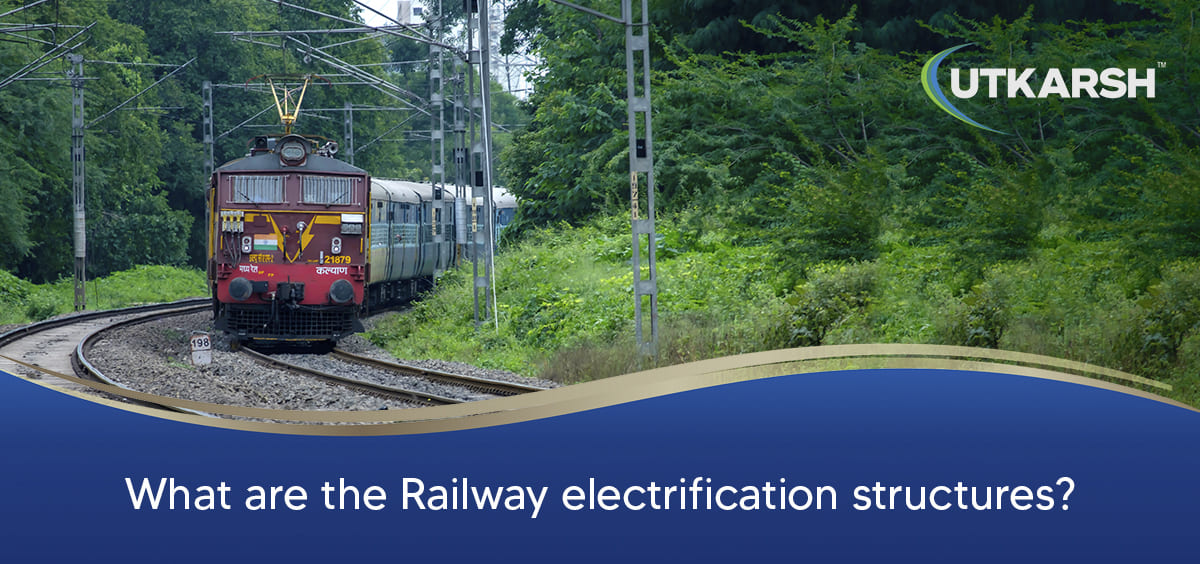What are the Railway Electrification Structures? What are Its Benefits?

Before electrification, railways primarily used steam locomotives to power their trains. Steam locomotives used steam produced by burning coal to power the engine, which in turn pushed the wheels. Steam locomotives were extensively used for long distance travel. They could carry large amounts of fuel and water and could be operated for prolonged periods of time without the need to refuel. They could easily pull heavy loads which made them ideal for hauling freight trains. However, steam locomotives had some notable drawbacks such as low efficiency and high maintenance requirements. They also had a negative impact on the environment. In the middle of the 20th century, steam locomotives were replaced by diesel and electric locomotives
Here we will discuss some of the important insights on railway electrification.
Railway electrification provides electrical power to the trains that make them run on electricity instead of diesel or steam. The process of railway electrification involves installing overhead power lines or a third rail along the railway track. This helps trains with electrical systems to draw power from these sources. This electrical power is then used to operate the trains, power the lights and other miscellaneous on-board systems. It also provides traction for the wheels.
The first electric train in India was introduced in Mumbai in 1925. It ran between Bombay VT (now Chhatrapati Shivaji Maharaj Terminus) to Kurla on the Great Indian Peninsula Railway (GIPR). This marked the beginning of railway electrification in India.
Railway electrification offers a myriad of benefits:
Energy efficiency: Railway electrification offers improved efficiency and helps reduce the overall cost of running the railway system.Diesel-powered trains transfer about 30% of the energy generated to the wheels. With railway electrification, 95 percent of the energy is transferred to the wheels.
Improved performance: Electric trains have higher speed and acceleration as compared to diesel trains. Hence, it leads to reduced journey times and improved reliability, thus offering further operational benefits. Also, electric trains are quieter and reliable compared to trains that use diesel or other fossil fuels.
Lower pollution levels: Railway electrification reduces usage of petroleum. It also reduces both air and noise pollution which makes electric trains a more environment friendly option than diesel trains. Electric trains also do not produce emissions as they run on electricity from the grid. It significantly reduces emissions of harmful pollutants, such as nitrogen oxide, particulate matter and greenhouse gases.
Sustainability: Railway electrification supports the development of sustainable transport systems as it not only reduces the dependence on fossil fuels but also promotes the use of renewable energy sources such as wind, solar or hydro power.
Maintenance Benefits: Electric trains usually require minimal maintenance compared to diesel trains as they have fewer moving parts. Also, electric trains do not have complex fuel systems or exhaust systems that require regular maintenance.
Importance of railway electrification structures:
Railway electrification structures are erected along the sides of the railway tracks to support the overhead electrical lines that power the trains. These structures typically include gantries, masts, and poles. Good-quality railway electrification structures are designed to withstand adverse weather conditions such as high winds and rain. Also, they can withstand the weight of the overhead wires. They are designed and manufactured in a way so that they can provide sufficient clearance for the passing trains.
Looking for a reputed manufacturer of railway electrification structures?
We are one of the leading railway electrification structures manufacturers in India. We are a CORE PART I approved vendor to manufacture and supply various Railway Electrification structures such as portals, masts, beams, gantries, small parts steel, substation structures as well as customized structures. Our raw materials are sourced from SAIL and Hindustan Zinc Ltd.